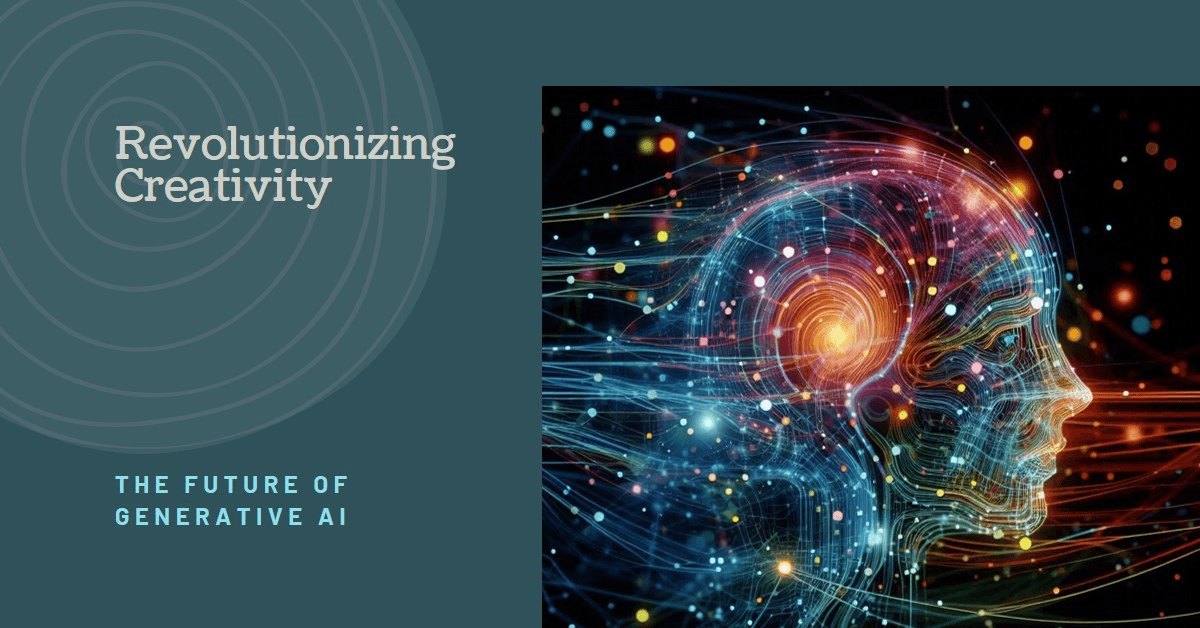Generative AI has emerged as one of the most transformative technological advancements of the 21st century. From text generation and image creation to music composition and beyond, generative AI is redefining creativity and productivity across a wide array of industries. Tools like ChatGPT, DALL-E, and other generative AI models have moved from experimental stages to practical applications, impacting creative industries, content creation, and productivity in profound ways. This article delves into the rise of generative AI, its capabilities, and its influence on various sectors, illustrating why it is poised to shape the future of work and creativity.
1. Understanding Generative AI: The Technology Behind the Tools
Generative AI refers to a category of artificial intelligence that can create new content, from text and images to music and even code, by learning patterns from existing data. Unlike traditional AI, which is designed to recognize patterns or make decisions based on input data, generative AI actively produces novel outputs that mimic human creativity. This is achieved through advanced machine learning techniques such as neural networks, particularly Generative Adversarial Networks (GANs) and Transformer models.
Key Generative AI Tools: ChatGPT and DALL-E
Two of the most popular generative AI tools are ChatGPT and DALL-E, both developed by OpenAI. ChatGPT is a language model capable of generating human-like text based on prompts, making it useful for a wide range of applications such as content creation, customer service, and even coding assistance. DALL-E, on the other hand, specializes in generating images from textual descriptions, opening up new possibilities for art, design, and advertising.
These tools have democratized access to AI-driven creativity, enabling individuals and businesses to produce high-quality content with unprecedented speed and efficiency. The rise of generative AI is not just about new technologies; it’s about redefining the boundaries of what machines and humans can create together.
2. Impact on Creative Industries: Redefining Art and Design
The creative industries are among the most profoundly affected by generative AI. Artists, designers, writers, and content creators are leveraging AI tools to enhance their creative processes, experiment with new forms of expression, and streamline production workflows.
Revolutionizing Visual Arts and Design
Generative AI is pushing the boundaries of visual arts, enabling artists to explore styles and concepts that were previously unimaginable. Tools like DALL-E allow creators to generate intricate artworks or design concepts from simple text prompts, offering new ways to visualize ideas quickly. This has led to a surge in AI-generated art exhibitions and a growing market for digital art NFTs (non-fungible tokens), where artists use AI to produce unique digital works.
In the world of design, generative AI is helping professionals generate prototypes, logos, and even entire advertising campaigns. For instance, AI-driven design platforms can suggest multiple variations of a design, allowing designers to choose or further refine concepts, thus accelerating the creative process. To explore more on how AI is transforming design, check out our article on AI in Digital Design.
Transforming Content Creation and Marketing
Content creation is another area where generative AI is making a significant impact. Tools like ChatGPT can generate high-quality written content in seconds, from blog posts and social media updates to product descriptions and technical documentation. This has immense potential for marketing professionals who need to produce large volumes of content quickly while maintaining a consistent brand voice.
Moreover, generative AI is increasingly being used in video production, where it can assist with scriptwriting, video editing, and even the creation of deepfake videos. While this raises ethical considerations, it also presents opportunities for filmmakers and advertisers to create personalized, engaging content at scale. For a deeper dive into AI’s role in content marketing, read our analysis on AI-Driven Content Strategies.
3. Boosting Productivity: AI as a Collaborative Partner
Beyond creativity, generative AI is becoming an essential tool for enhancing productivity in various professional settings. By automating repetitive tasks and providing new ways to generate ideas, AI is freeing up human talent to focus on higher-value activities.
Enhancing Business Operations and Decision-Making
In the corporate world, generative AI is being used to streamline operations and improve decision-making processes. For instance, AI-driven data analysis tools can generate reports, summaries, and insights from complex datasets, enabling business leaders to make informed decisions faster. AI models can also assist in drafting business communications, generating code snippets for software development, and even creating financial models.
One notable example is the use of ChatGPT in customer service, where it can handle routine inquiries, provide information, and even resolve basic issues without human intervention. This not only improves efficiency but also enhances customer satisfaction by providing instant responses. For insights on how AI is enhancing customer service, explore our article on AI in Customer Experience.
AI as a Creative Collaborator
Generative AI is also redefining collaboration by acting as a creative partner rather than just a tool. Writers use AI to brainstorm ideas, musicians compose songs with AI-generated melodies, and software developers receive coding assistance from AI models. This collaborative approach allows professionals to leverage AI’s strengths—such as speed, pattern recognition, and the ability to generate large quantities of ideas—to complement their own skills.
For example, AI-driven platforms are now capable of generating entire marketing strategies based on market data and consumer behavior analysis, allowing marketing teams to refine and execute strategies with greater precision. To understand the future of AI collaboration, check out our discussion on AI as a Creative Partner.
4. Challenges and Ethical Considerations: Navigating the AI Landscape
While the potential of generative AI is immense, it also brings a set of challenges and ethical considerations that must be addressed. The rapid advancement of AI technologies has sparked debates on issues such as data privacy, content authenticity, and the potential for AI-generated misinformation.
The Risk of Deepfakes and Misinformation
Generative AI’s ability to create hyper-realistic images and videos has raised concerns about the proliferation of deepfakes—AI-generated media that can be used to deceive or manipulate audiences. This poses significant risks in areas such as political communication, where deepfakes could be used to spread false information. As AI-generated content becomes more sophisticated, ensuring the authenticity and reliability of digital media is becoming increasingly challenging.
To combat these risks, tech companies and governments are investing in AI detection tools that can identify AI-generated content and help prevent the spread of misinformation. However, as generative AI continues to evolve, staying ahead of these challenges will require constant vigilance and innovation. For more on the ethical implications of generative AI, read our article on Ethical AI: Balancing Innovation and Responsibility.
Intellectual Property and Ownership Issues
Another pressing issue is the question of intellectual property (IP) rights and ownership of AI-generated content. Since generative AI models are trained on vast amounts of existing data, including copyrighted works, the line between inspiration and infringement can be blurry. Creators and legal experts are grappling with questions about who owns the rights to AI-generated works and how to ensure that original creators are properly credited and compensated.
The development of clear legal frameworks and guidelines will be crucial in addressing these IP challenges, ensuring that the benefits of AI are distributed fairly while protecting the rights of original content creators. For insights on navigating IP issues in the age of AI, explore our guide on Intellectual Property and AI.
Conclusion
Generative AI is not just a technological trend—it represents a fundamental shift in how we create, collaborate, and innovate. By harnessing the power of AI tools like ChatGPT and DALL-E, businesses and individuals can unlock new levels of creativity and productivity, transforming industries and redefining the boundaries of what is possible. However, as we embrace these advancements, it is equally important to navigate the ethical and regulatory challenges they bring, ensuring that the future of AI is one that benefits all.
For more comprehensive insights on AI trends and their impact on various industries, explore other articles on Epic Infinite, such as AI Innovations Reshaping the Workforce and The Future of Generative AI in Business.











One thought on “Generative AI: The Future of Creativity and Productivity”